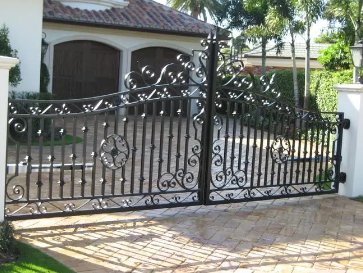
2024/11/26
A method for making iron flowers, including erecting a shed and hanging fireworks, characterized in that the shed is a mesh body, the lower part of the mesh body is supported by a ground support, fresh wet branches are placed on the top of the shed, fireworks, firecrackers and a fire starter are tied to the branches, and a vertical upward fire starter is installed on the fire starter. At the same time, a 3-4 meter high vertical pole is installed in the middle of the shed mesh body and is fixed to the shed by a steel pipe. Firecrackers, fireworks and a fire starter are hung on the vertical pole, and a vertical upward fire starter is installed on the fire starter for setting up colors. An iron melting furnace is arranged next to the vertical pole of the shed, and a mixture of 100 kg of white pig iron, 30 kg of coke, 5 kg of quartz stone, 5 kg of white limestone and 3 kg of magnesium powder is melted in the furnace to form a high-temperature juice of more than 1700°C. The flower beater holds a flower stick with holes and grooves drilled in it to inject the juice into the flower stick, and quickly stands under the shed, wearing a safety helmet. Full protective cover, and then use another flower stick to hit the flower stick with iron juice towards the branches with fireworks, firecrackers, and fire in the flower shed, so that the iron juice rushes to the branches and spreads, and ignites firecrackers, fireworks, and fire, forming a unique iron flower fireworks.
The iron art and iron flowers sold in the market now are generally cast with pig iron or forged with wrought iron. The common feature of these two materials is that they are easy to rust. To avoid this phenomenon, the key lies in how to do a good job of anti-rust treatment on the surface of iron art and iron flowers.

At present, the common practice of surface anti-rust process of iron art and iron flowers is to apply one or two layers of anti-rust paint on the surface after simple rust removal, and then apply various colors of paint as required. The disadvantage of this process is that once there is unevenness or omissions in the coating of anti-rust paint, the iron art will easily start to rust at the missed coating, causing the rust spots to spread. Moreover, the effective anti-rust time of anti-rust paint is only about two years.
Another surface treatment of iron art uses the internationally common spraying process. Before spraying, the relevant parts are first immersed in the pickling tank to thoroughly remove the rust on the surface of the iron parts, and then phosphating them, and then electrostatically stenciling the iron art and sending it to the oven for baking. This process has carried out comprehensive and careful treatment of all parts of the iron parts, ensuring that the iron art and iron flowers will not rust for a relatively long time.
Iron flowers are generally divided into three types:
1. Cast iron, 2. Steel forging, 3. Steel (mainly flat steel) modeling
Advantages: Cast iron: low cost, fast speed; Steel forging: unique and beautiful shape, good plasticity; Steel modeling: relatively low cost, good plasticity.
Disadvantages: Cast iron: poor plasticity, single shape; Steel forging: high cost, must be manufactured by professionals; Steel modeling: relatively high cost, difficult construction.
Scope of application: Cast iron: low-grade areas; Steel forging: large public places, high-end hotels; Steel modeling: can be used in all places.
Production process: Cast iron: pattern design, proofing, sand turning, casting; Steel forging: pattern design, material collection, forging, forging, welding; Steel modeling: pattern design, material collection, cold bending, welding.
As for rust prevention, there shouldn't be any problem with current technology (as long as you follow the specifications).
In short, iron flowers are basically pressed out. Some small factories make small iron art by cutting machines, electric welding, chiseling, die pressing, etc., and then weld the parts together, such as iron art gates and iron art guardrails; large ones have professional equipment, for example, I know of a machine called a fishtail machine.